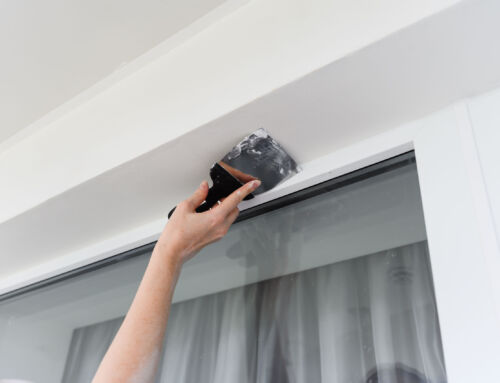House settlement – what you need to know

Congratulations on your brand new home! Purchasing a new home is exciting, but there are some things you should know as your home goes through its first year. Settling is a normal process that all new buildings go through. Find out what is expected and what you should have looked at if it happens.
First, what is settling?
When a home is first built, many types of materials are brought together to form the foundation, walls, interior and features. All of these materials go through different stages as they mature and as the season’s change. Each climate will affect building materials differently, as will the time of year the house is constructed.
Over the first year, you will notice some changes to your home; it is essential to know what is expected and what should be looked at by your home warranty team.

Foundation
When concrete is poured, it sets and hardens in a short period of time, but it can take up to a year and four full seasons for it to reach its final settling point. Concrete contains a lot of moisture, and it can take a long time for that moisture to leave, and shrinkage can occur. When concrete shrinks, cracks appear. These cracks are expected and show up in all settled concrete.
Any crack smaller than 16th of an inch wide is completely normal and requires no repairs. This is a normal part of your home settling and causes no damage to your foundation.
Windows & Doors
Windows and doors will also shift as the house settles. Causing them to stick at times. But, again, this is completely normal and, with a small adjustment, can be solved. Tightening hinges is a quick fix that corrects this issues. If you see cracks or broken corners on windows and doors, call your builder.
Drywall
Drywall also shifts as the home settles and can also crack. These small cracks will be quickly patched by the builder and cause no structural damage. Any drywall cracks longer than 12 inches would be considered out of normal. All of these settling movements cause the home to reach the final resting place within one year and will not cause issues.

Noises
You may also hear your home shift. This can feel strange but is entirely normal. It shows up as sounds such as pops or cracks. Again, very typical and part of your home settling in. These will often sound a lot like the noises a furnace makes when adjusting temperatures.
So when should you be concerned?
Tilting floors
If you see floors start to shift and become uneven, that is a time to call your builder. This is exceptionally uncommon.
Foundation
If you see cracks larger than 16th of an inch, or if water is coming in through the cracks, this is also time to reach out. These may indicate a foundational problem that may be covered by your home warranty and builder.
Keep this list saved for easy access over the first year of new homeownership. And remember, Canada has some of the highest standards of building in the world, and we partner with only the best builders: your home was built with care and professionalism.






Connect